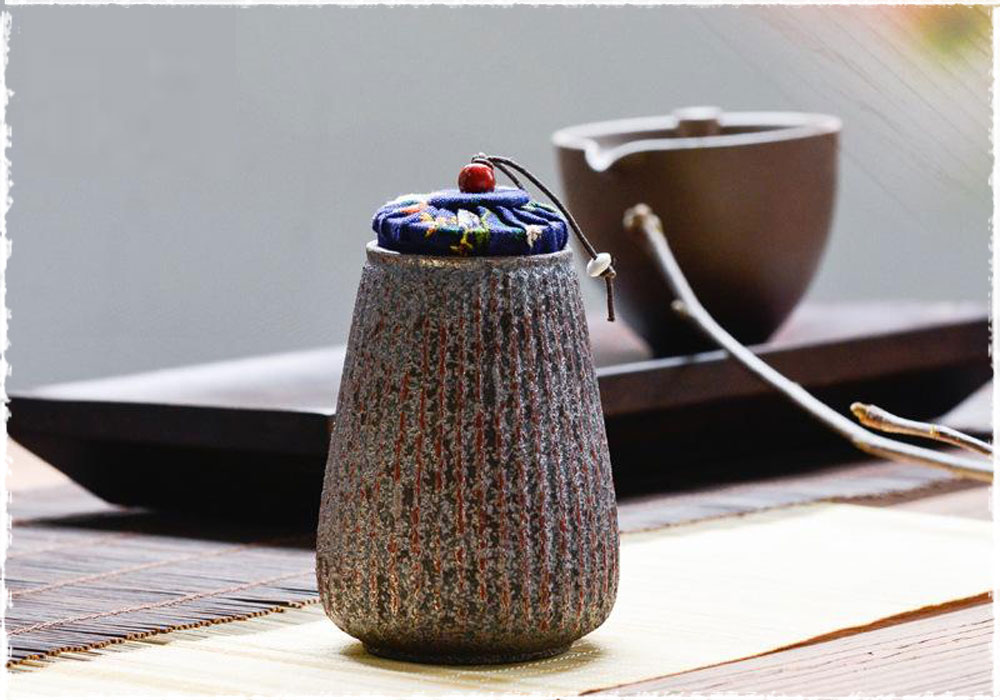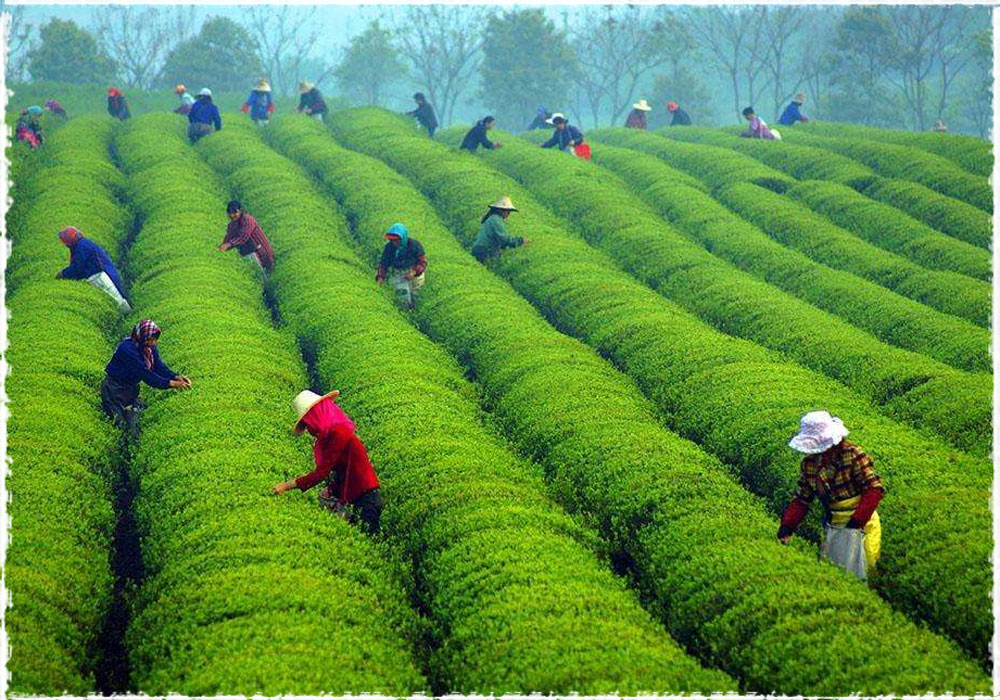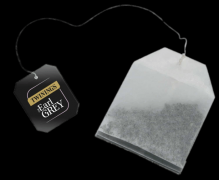How much is Anhua black tea? which brand is the three unique brands of Anhua black tea?
Before the advent of black tea, Anhua had been producing steaming green and white tea. According to historical records, Anhua's tea production can be traced back to the Tang Dynasty (1400 years ago). Anhua black tea rose in the Ming Dynasty (600 years ago). At that time, the government's control of tea reached an unprecedented level.
We mentioned the ancient tea-horse road in our previous posts about Tibetan tea. In the Tang Dynasty, the tea-horse trade in central China and the border areas developed, and developed a trade route called "Ancient Tea-Horse Road". Black tea is the product of green tea, which is fermented in the hot and humid weather of a long journey.
In the beginning, green tea was the main product in Hunan, not black tea. More specifically, this is a kind of rough tea. The crude tea will then be sent to other areas for further processing. For example, Jingyang uses Anhua black tea to produce Poria brick tea, famous for its golden flowers, or processed into Tibetan tea in Ya'an, Sichuan Province.
At that time, there was a special department to manage the production and sale of tea. All teas are divided into three grades.
Tribute tea: tea masters offer the highest quality tea to emperors and aristocrats.
Commercial tea: after obtaining government qualifications and quotas, tea merchants buy tea from the tea garden and sell it in the private sector.
Official tea: most of the time, it refers to the sale of tea in the Border region, mainly for the tea and horse trade in the Border region and abroad, which is uniformly managed by the government.
Hunan has a superior natural environment and a long history of tea production. Junshan Silver Needle Tea (a kind of yellow tea) in Hunan has always been the darling of the market. Because of the big-leaf tea trees, the black tea produced here also has a strong flavor. Another significant advantage is that due to the maturity of the industrial chain, Anhua tea can get a lower price; it has excellent performance-to-price ratio.
Anhua black tea has not been listed as official tea. Although smuggling tea was a capital crime at that time, in the face of huge interests, many tea merchants and bandits still planned to smuggle tea. Anhua is near the Ancient Tea-Horse Road. You can make a lot of money by producing black tea here and then smuggling it to the border areas in exchange for horses. Anhua black tea has caused great damage to the official tea industry because of its good taste and low price.

Like many popular industries today, fakes and shoddy products soon appear in lucrative and unregulated markets. The Ming government finally identified Anhua black tea as official tea in order to better contain and supervise it. When the Tibetan tea in Ya'an, Sichuan can not meet the consumption of the border people, Anhua black tea can be used as a supplement.
However, after Anhua black tea was officially accepted, it became more popular with the border people. Tea merchants reasonably bought and sold Anhua tea, making it quickly more popular than tea sold at other borders. Surprisingly, because of Anhua black tea's historical reputation and often exaggerated health benefits, some swindlers used Anhua black tea as a gimmick and organized a Ponzi scheme about 10 years ago.
Anhua black tea type
According to the leaf quality and processing methods, Anhua black tea can be divided into seven categories, namely, three swords, three bricks and raw tips.
Sanjian tea (sharp) refers to Anhua black-skinned crude tea, which is classified according to the quality of tea from the source. Most of the time, they also sell loose tea.
Tianjian. Shengjian tea is made from tea picked before Grain Rain (a solar term in China). The picking standard is from one bud to the second leaf, which is the most tender. The final leaves are tight, dark and shiny. The extract is amber, clear and with strong rosin. In the past, Tianjian tea was a tribute, only for the emperor to eat.
Gong Jian. Gongjian tea is made from leaves picked before the hot summer in early May. The standard for picking is from one bud to the fourth and fifth leaves. Some Tina Jian and Shengjian will be mixed into the final product. The quality of Gongjian Anhua black tea is slightly lower than that of Tian Jian, but it is still very good, usually for the aristocracy and the rich.

Sheng Jian. Raw fried tea is made from tea picked after May; the picking standard is from one bud to the fifth and sixth leaves. Anhua black tea has a long history, many stems, strong taste and is not easy to brew. It is usually provided to civilians.
Loose leaf Anhua black tea
Three bricks
Three bricks refer to the compressed tea made of Anhua black rough tea, which is mainly classified according to the processing method.
Poria brick: Poria brick tea is one of the most famous. It has a unique processing step called "flower making", which makes many tiny golden flowers (Eurotium Cristatum) grow in bricks, bringing a lot of benefits. Even with Anhua black tea as raw material, it is also processed in Jingyang. It is said that without Jingyang, it is very difficult for black tea to produce golden flowers.
Black brick: Anhua black brick tea is a traditional black brick tea. As tea-making requires different grades of tea, tea makers in the past needed to press higher-quality tea on the surface and lower-quality tea on the inside. Later, Hunan Baixi Tea Factory improved the processing method to make the internal and external quality of brick tea consistent. Tea factories will also print their own brand on brick tea, so black brick tea is also called "eight-character tea".
Tile: "Hua" means pattern design in Chinese. Flower brick tea is improved from Qianliang tea. In order to distinguish it from black brick tea, the tea master will print some patterns on all sides of the brick, so it is called tile.
Important Notice :
前街咖啡 FrontStreet Coffee has moved to new addredd:
FrontStreet Coffee Address: 315,Donghua East Road,GuangZhou
Tel:020 38364473
- Prev

What is the difference between Earl Grey Tea's tea and black tea? how is Earl black tea made with a fragrance?
I believe that when you go to the place where the supermarket sells tea, it is not difficult to find that there are three or four brands of tea with the same name, Earl Grey, Earl Grey Tea, which is the most popular tea in the world. Earl Grey tea is not a kind of tea. It belongs to the category of seasoned tea. Seasoned tea, including any type of tea, white tea, green tea, oolong tea and black tea are all used.
- Next

Starbucks China News Wang Jingying steps down as CEO the way Starbucks invests in the Chinese market
This morning, coffee chain giant Starbucks released news: Starbucks China management team structure will be a major change, Wang Jingying will step down as CEO! At 09:25 today, Starbucks China's official Weibo released an employee letter titled "look forward to the Future along the way". In her letter, Wang Jingying made the following explanation on the change of "management team structure": Starbucks China Dong
Related
- Customers have "changed" Manner's new products! Shop assistant: Please don't mess around!
- Remove sockets in customer areas at Starbucks stores?! Netizen: I won't go if I really tear it down
- What is the difference between the taste steps of sun-dried coffee and washed coffee? Why is sun-cured coffee sweeter and washed coffee sour?
- The recipe for salty grapefruit dirty is revealed! Coffee Festival salty grapefruit dirty coffee making materials parameters ratio milk share!
- How about the flavor of Sunlight 74158 at Sidamo Banshaha Mathieu Processing Factory in Ethiopia? 74158 Share the proportion of coffee brewing parameters!
- What effect does Italian American coffee with filter paper have? Will coffee taste better if it is put on filter paper at the bottom of the powder bowl?
- What is the color difference in coffee beans? What are the characteristics of honey processed coffee beans? Why are the anaerobically treated coffee beans uneven in color?
- How does novice Xiaobai quickly get started and make coffee? Newbies learn to make coffee by hand and share the specific steps and process process!
- Costa tea has a shelf life of 100 years?! Expert: Unable to verify
- It's a huge uproar! American milk addition was rejected by Manner employees?!

